To lift our days during this time, each week the Designers Institute will release a case study on a Best Design Awards 2019 Purple Pin winner
– a project description in the words of the designers along with a short interview with writer Mike Barrett.
Purple Pin Case Study — Public Good
Designworks
Tiaki - Care for New Zealand
Public Good Award: Tiaki - Care for New Zealand
Studio: Designworks
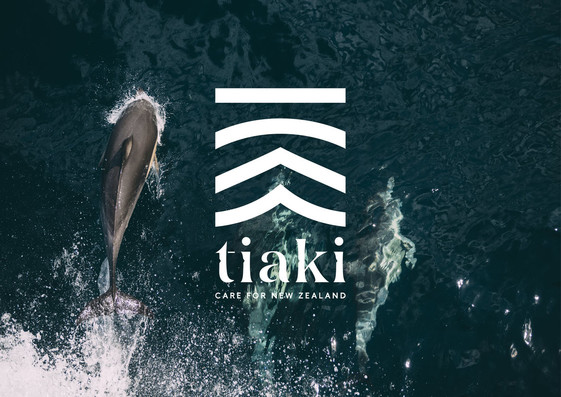
Conscientious travelling in New Zealand
Project description
This campaign was developed to encourage international guests, New Zealanders and our manuhiri to travel more safely and conscientiously through Aotearoa. Part of the challenge was maintaining the integrity of the design while navigating and collaborating with a broad group of stakeholders: Air New Zealand, 100% Pure New Zealand, NZ Māori Tourism.
Tourism Industry Aotearoa, Local Government New Zealand, Tourism Holdings Limited and the Department of Conservation, as well as numerous individual contributors.
The project is rooted in a shared kaupapa – the responsibility to actively care for New Zealand, for now and for future generations. This was enabled by a collaborative, wairua-centred design approach that considered the wellbeing of our people, our culture, our land and our guests.
A wide range of Māori advisers, designers, storytellers, orators, and academics came together to enrich this kaupapa. They included Kelvin Davis, Minister of Tourism; Pania Tyson-Nathan, CEO of Māori Tourism; Dr Valance Smith, Te Reo language expert; Joe Harawira, storyteller and advisor at DOC; Anzac Tereihana Tasker, Māori Design Director at Designworks; Andrew Baker, cultural advisor at 3degrees; and Henare Jonson, cultural advisor at Air New Zealand.
The result was a lasting movement that educates and encourages all people to act as guardians of Aotearoa. This included a website and a free suite of assets for all tourism operators. After its launch at Te Papa by Tourism Minister Kelvin Davis on 1 November 2018, the campaign gained traction with tourism operators, New Zealanders and tourists, and wide support from other industry bodies and the wider public. As a movement, it has the potential to continue to grow and enrich the experience of Aotearoa New Zealand for all.
Q&A
Mike Barrett talks to Anzac Tasker PDINZ, Creative Director and Jef Wong FDINZ, Executive Design Director at Designworks.
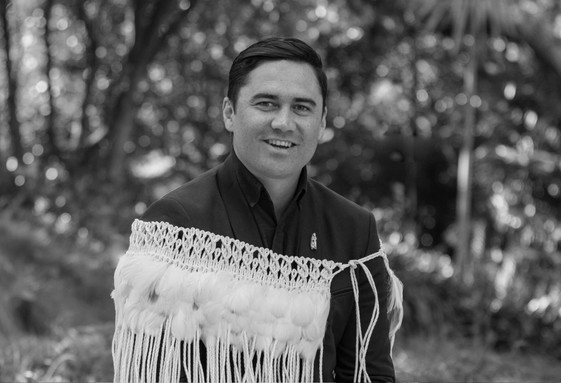
Anzac Tasker PDINZ
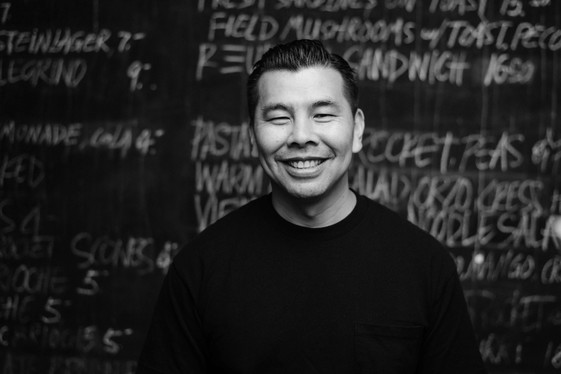
Jef Wong FDINZ
Kia ora Jef, Anzac. What’s Tiaki and how did it start?
Anzac: Tiaki was about looking at how we managed the behaviour of visitors, not only international guests but domestic tourists as well, and how we could help them go about their journey throughout New Zealand. It was about positively influencing how they behaved, how they looked after the environment, and how they engaged with New Zealanders. It was also about how they engaged with the culture, because cultures around the world are completely different.
Around the same time, we’d noticed a shift in the mood of the nation away from the “let’s open the floodgates and allow everyone to come in” approach to tourism. Although it had added so much value to our economic base, people had begun to question the extent of it – you know, “when I go to Hot Water Beach, I can’t get a spot to dig a pool for my kids”, or “when I want to book a walk on one of the great walks there are no places left”. Tiaki was also about addressing that shift in national mood.
Jef: Yes, at that time, tourist behaviour was hitting the news for all the wrong reasons…campervan driving, free camping all around the place, and other tensions were being amplified. The intention with Tiaki was to provide an induction to the country, to ask guests to buy into a certain standard of care.

Anzac: Also, New Zealand domestic travellers were not necessarily leading by example. So there were two roles – to educate our international visitors in how we care for New Zealand, and an invitation to New Zealand travellers – a request for them to lead by example.
There was plenty of support for Tiaki from the upper echelons of New Zealand tourism? How did that play out?
Anzac: There are several organisations who do have their own agenda and at the same time they have a common cause which is to enrich the extent of the New Zealand and international visitors. Making sure that their journey is safe is also a key part of that. But coming together for a common kaupapa was something that we don’t actually often see. We managed the conversations by always talking about the kaupapa, about enriching Aotearoa. That made it a lot easier for people to put any agendas to one side.
Globally, were there any valid precedents to look at?
Jef: There are other initiatives around the world with a similar purpose. The Icelandic Pledge is one. The initial pledge came from Air New Zealand in partnership with Tourism New Zealand, with other organisations in support. But the original brief was how do we create a Kiwi pledge. As we started to navigate the strategy, we started to try and understand what our style of pledge would be and what our style of educating would be. We didn’t really feel like a pledge aligned with New Zealander.
It’s not a word that comes up often in conversation, is it?
Jef: No... We wanted to change it from a duty to an invitation. It shifted it from being a Kiwi pledge to the Tiaki Promise. It’s not something that we’re ordering you to do; you know, sign here and stick to it. It’s saying this is how we go about our way in New Zealand. This is how we look after our environment.
Anzac: This is how we look after our visitors through kaitiakitanga, through manaakitanga. Connecting it through universal values of hospitality. Looking after our environment. All of those values belong to anybody around the world. You know, we can all link into that. We started to try and navigate the space of Māoridom that would make it unique to New Zealand. Tiaki. The word ‘aki’ so, Tiaki. Aki is the active ingredient within the word that makes it proactive. Mana ‘aki’. Manaaki is don’t wait for the visitors to have to be seated and don’t wait for them to ask for a cup of tea. Being proactive is making sure that they’re seated properly and in other aspects of hospitality. In turn that lifts your mana. Manaaki.
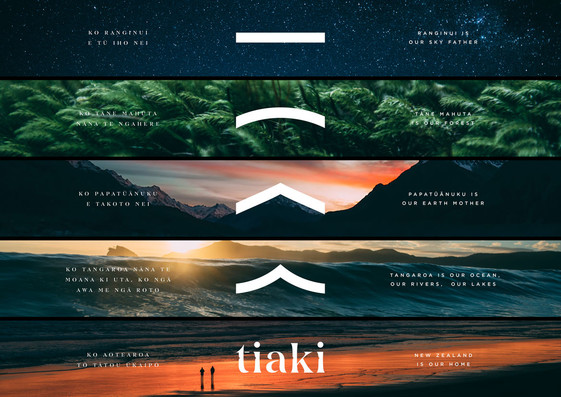
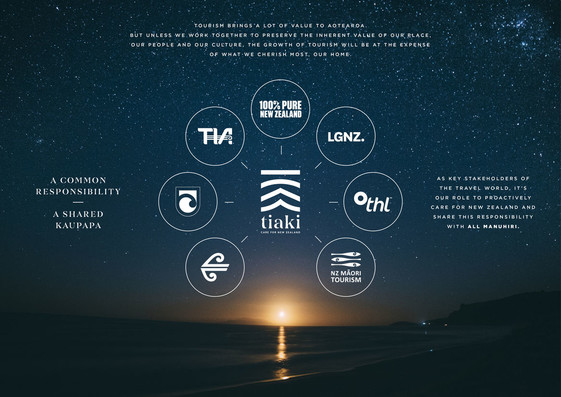
And what about success. This is something that’s going to be hard, if not impossible, to measure, right?
Anzac: Throughout the process and even once it had been launched that question has been raised. How do you measure a promise? I don’t think our first and foremost intentions were to try and measure emotions, you know what I mean? It’s up to the person that takes up the promise to follow through with it. It’s something you can’t measure. It’s a behavioural thing for an individual as they go about their journey through New Zealand. We shouldn’t be trying to meet any kind of mutually agreeable KPIs when it comes to this kind of thing.
Finally, give me a quick breakdown of the design expression.
Anzac: For us, it was about communicating clearly in the Aotearoa space. In that we could say, oh look, that’s not a big piece of earth. We have names for these things – that’s Papatūānuku, our earth mother. Or Tangaroa – our ocean, our lakes, our rivers. That’s Ranginui – he’s our sky. When you align the message with entities that that originate from Māoridom you can achieve a universal understanding and give people a richer reason to look after something.
The identity is acknowledging the life force of our environment. It actually acknowledges all of the key components of the environment. Form the sky you come down through the different layers of the environment. You have Tāne Mahuta as a canopy. The shelter is Papatūānuku and then, underneath, comes Tangaroa. Then the proactive ingredient that looks after all of that is the word tiaki. Tāwhirimātea, the guardian of the wind, he’s in there too, but Tāwhirimātea is the blind god. You can’t see Tāwhirimātea and Tāwhirimātea can’t see you – that’s why he’s so crazy. That was the foundation of the identity. It made it easy for us to tell the story, to convey that we are the guardians of all of this, and that we invite you to look after it too. Once we had that it was important that we didn’t just make it a Māori symbol. It was led by Māori principles and values, but it’s an icon for all New Zealanders. You could pick up on the cultural cues and the tribal aesthetics but, at the same time, it’s accessible by everybody.
